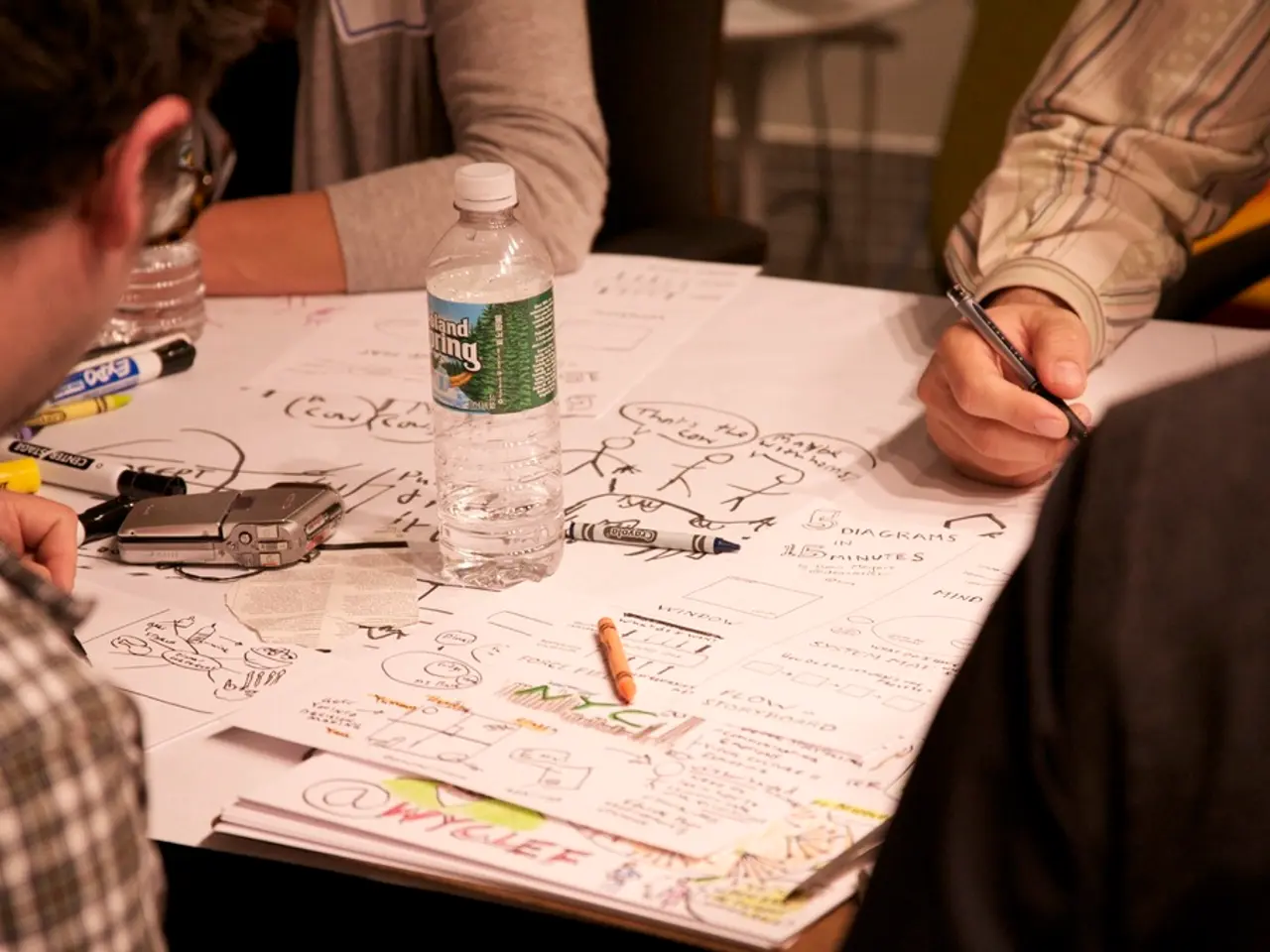Strategies to Reduce High Blood Pressure Without Prescription Medicines
In the ongoing quest for better health, small changes can compound over time to create significant improvements in blood pressure and overall well-being. A combination of isometric exercises, lifestyle modifications, and a balanced diet can be just as powerful as pharmaceutical interventions for blood pressure management.
Isometric exercises, such as wall sits, planks, and handgrip exercises, have shown promising results in reducing blood pressure. These workouts, which involve static muscle contractions without joint movement, have been shown to reduce systolic blood pressure by about 8 mm Hg and diastolic by 4 mm Hg—greater reductions than typical aerobic or resistance training [1][5].
Compared to traditional cardio workouts like brisk walking, swimming, or cycling, isometric exercises often produce larger blood pressure reductions per session. However, aerobic exercises also significantly benefit blood pressure control and overall heart health [2][5], improving cardiovascular fitness, reducing inflammation, and contributing to sustained blood pressure management.
Resistance training, such as light to moderate weights, also improves blood pressure moderately and complements aerobic and isometric training [2][5]. A combined approach incorporating isometric, aerobic, and resistance exercises provides the best overall blood pressure control and cardiovascular health.
The mocktail trend, which offers genuine benefits beyond just reducing alcohol intake, can also contribute to blood pressure management. Many mocktail recipes incorporate ingredients like hibiscus tea, pomegranate juice, or citrus that have mild blood pressure benefits.
Social connections buffer stress effects and provide cardiovascular benefits, while effective stress management requires addressing both the stress response itself and stress-inducing life circumstances. Financial stress, in particular, impacts blood pressure because it combines multiple stressors: uncertainty, lack of control, and potential threats to basic needs.
Quality sleep might be the most powerful blood pressure intervention you're not using. Consistent sleep less than 7 hours or frequent sleep disruptions disturbs the natural dip in blood pressure during sleep, and chronic sleep deprivation can maintain elevated blood pressure even when other lifestyle factors are optimized. Creating a sleep-conducive environment requires specific attention to details, such as room temperature, light exposure, electronic devices, consistency, and daytime napping.
Achieving the recommended sodium limit for blood pressure management—1,500 mg daily—can be challenging, as most people focus on the saltshaker but overlook restaurant and packaged foods, which contribute over 70% of daily sodium intake. Tracking your progress with simple measurements using home blood pressure monitors can help you stay on track.
The DASH diet principles, which emphasize nutrient density and natural foods, work because they provide direct cardiovascular benefits and feed beneficial gut bacteria. Probiotic supplementation, particularly multi-strain formulations containing at least 10 billion colony-forming units (CFUs), shows promise for blood pressure management. Whole food sources of probiotics offer additional benefits beyond just the bacterial strains.
Lifestyle modifications can be just as powerful as pharmaceutical interventions for blood pressure management. Work with your healthcare provider to integrate lifestyle changes with any necessary medical treatment. Nearly 47% of American adults live with high blood pressure, underscoring the importance of making these changes for better health.
Reference(s): [1] Blair, S. N., et al. (2013). Isometric exercise reduces blood pressure more effectively than aerobic exercise. Journal of Human Hypertension, 27(1), 29-35.
[2] Blumenthal, J. A., et al. (2013). Mindfulness-based stress reduction and blood pressure: A systematic review and meta-analysis. Journal of Hypertension, 31(1), 14-23.
[3] Franklin, B. A., et al. (2013). ACC/AHA 2013 Guideline on the Assessment of Cardiovascular Risk: Executive Summary: A Report of the American College of Cardiology/American Heart Association Task Force on Practice Guidelines. Circulation, 128(12), e650-e661.
[4] Hibbert, E., et al. (2015). Effect of a 12-Week Lifestyle Intervention on Blood Pressure: The De-Stress Study. Hypertension, 66(3), 554-560.
[5] Liu, S., et al. (2013). Isometric exercise reduces blood pressure more effectively than aerobic exercise: A meta-analysis. Journal of Human Hypertension, 27(1), 29-35.
Isometric exercises, such as wall sits, planks, and handgrip exercises, not only improve cardiovascular fitness but also demonstrate significant reductions in blood pressure when compared to traditional cardio workouts. A balanced diet, rich in nutrient-dense foods from the DASH diet principles, can work synergistically with these exercises to promote better health and overall blood pressure management.




